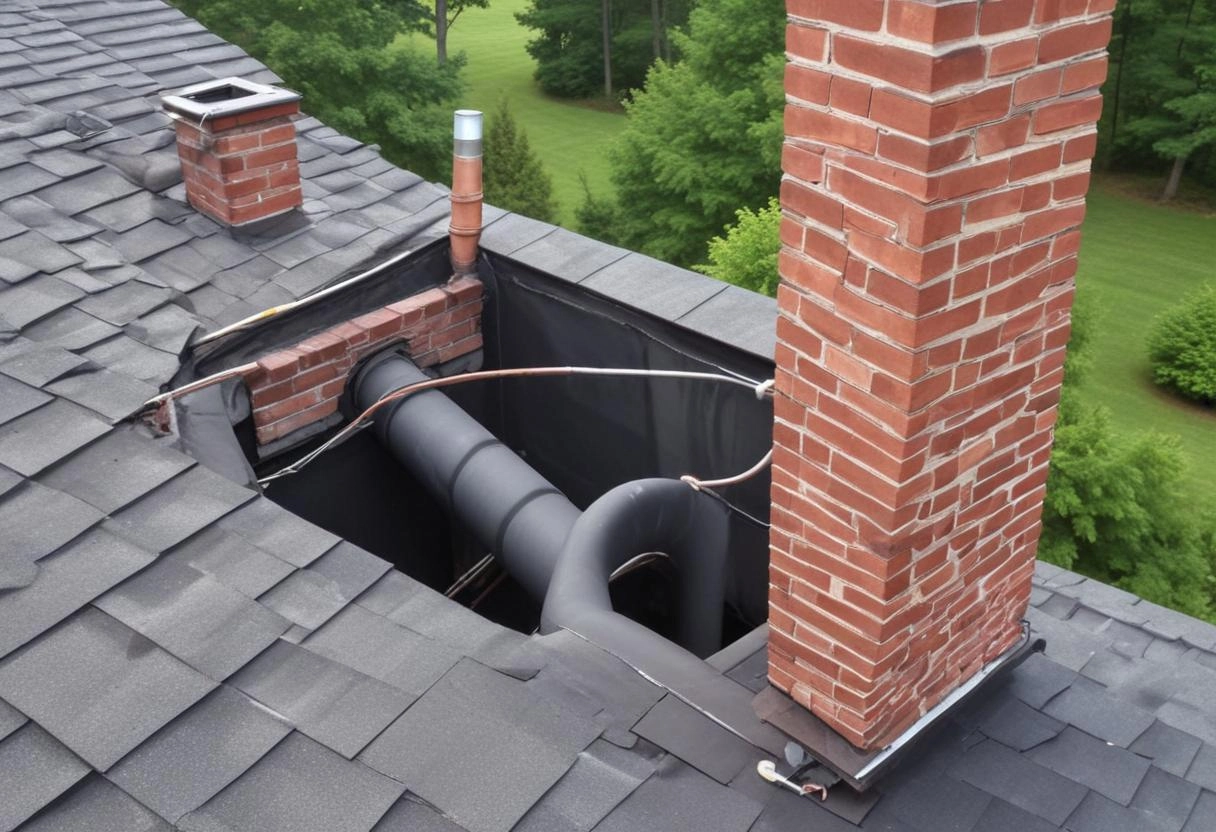Maintaining a clean and well-maintained furnace chimney is crucial for both the safety and efficiency of your heating system. Regular chimney cleaning not only prevents potential hazards but also ensures optimal performance of your furnace. In this blog post, we’ll explore the importance of chimney maintenance, signs of chimney liner damage, and how to properly schedule your furnace chimney cleaning.
Why Regular Chimney Cleaning is Essential
Preventing Chimney Fires
One of the primary reasons for regular chimney cleaning is to prevent chimney fires. Creosote, a highly flammable byproduct of burning fuel, accumulates inside the chimney over time. If not cleaned regularly, this buildup can ignite and cause a dangerous chimney fire, which poses a significant risk to your home and family. Regular cleaning removes creosote and reduces this risk, ensuring your home remains safe.
Improving Heating Efficiency
A clean chimney promotes better airflow and more efficient operation of your furnace. When a chimney is clogged with soot and debris, it restricts the exhaust flow, causing the furnace to work harder and consume more fuel. By keeping your chimney clean, you maintain optimal airflow, which allows your furnace to operate efficiently and economically, ultimately saving you money on fuel costs.
Ensuring Proper Ventilation
Blocked or dirty chimneys can lead to poor ventilation, resulting in harmful gases like carbon monoxide accumulating inside your home. Regular chimney cleaning ensures that these gases are properly vented outside, maintaining a safe indoor environment and protecting your family from potential health hazards.
Extending the Lifespan of Your Furnace
Regular maintenance, including chimney cleaning, helps extend the lifespan of your furnace. A clean chimney reduces the strain on your heating system, preventing premature wear and tear. This proactive approach means fewer repairs and replacements, leading to significant cost savings over time.
Signs of Chimney Liner Damage
While regular cleaning is crucial, it’s also important to be aware of signs that indicate damage to your chimney liner. Addressing these issues promptly can prevent more severe problems and ensure the safety and efficiency of your heating system.
Cracks or Gaps
Inspect your chimney liner for visible cracks or gaps. These can occur due to the extreme temperatures and constant use. Cracks compromise the liner’s ability to contain and vent combustion gases properly, leading to potential leaks and safety hazards.
Flaking or Peeling
Flaking or peeling of the liner material can indicate deterioration. This damage can compromise the liner’s ability to contain heat and gases, leading to further issues.
Rust or Corrosion
Rust or corrosion on metal liners is a sign of damage. Moisture and high temperatures can cause metal liners to deteriorate, affecting their performance and safety.
Recommended Chimney Cleaning Schedule
Annual Inspection and Cleaning
The National Fire Protection Association (NFPA) recommends an annual inspection and cleaning of your chimney. This yearly check-up by a certified professional can identify and resolve potential issues before they escalate into major problems.
Post-Heating Season Cleaning
After the heating season ends, scheduling a chimney cleaning is a wise move. Removing accumulated soot, creosote, and debris prevents these substances from hardening and becoming more challenging to clean later on.
Pre-Heating Season Check
Before the heating season begins, have your chimney inspected and cleaned to ensure it’s in good condition. This pre-season check helps uncover any issues that may have developed during the off-season and ensures your furnace is ready for the colder months ahead.
Conclusion
Regular maintenance of your furnace chimney, including cleaning and inspection, is essential for safety, efficiency, and longevity. Understanding the signs of chimney liner damage and adhering to a recommended cleaning schedule can prevent costly repairs, enhance the performance of your furnace, and protect your home and family. Schedule your chimney inspection today to ensure a safe and efficient heating season.


